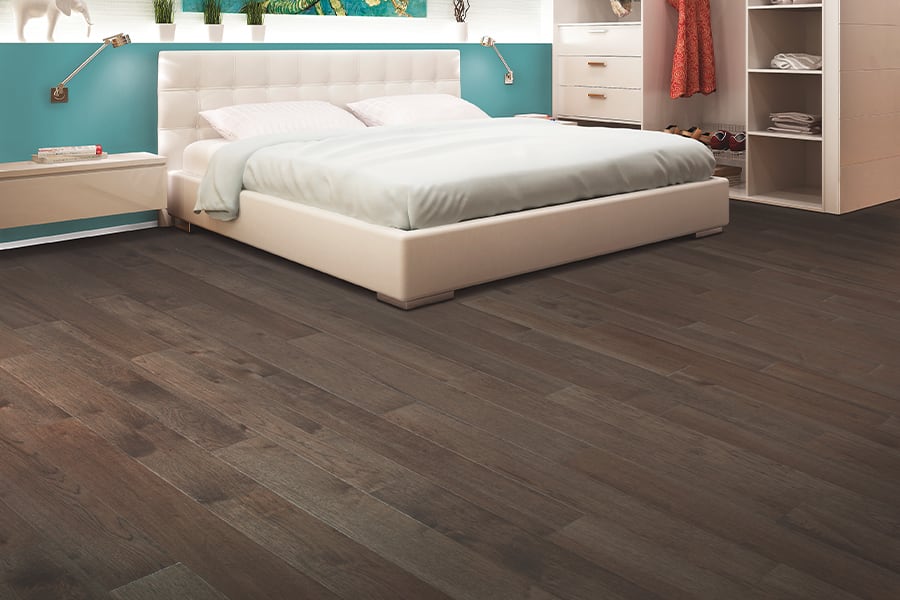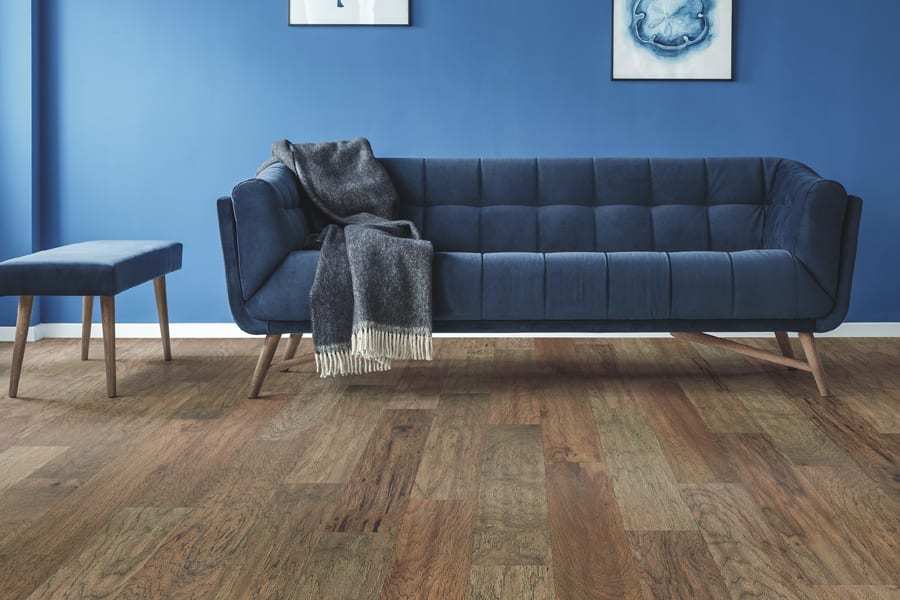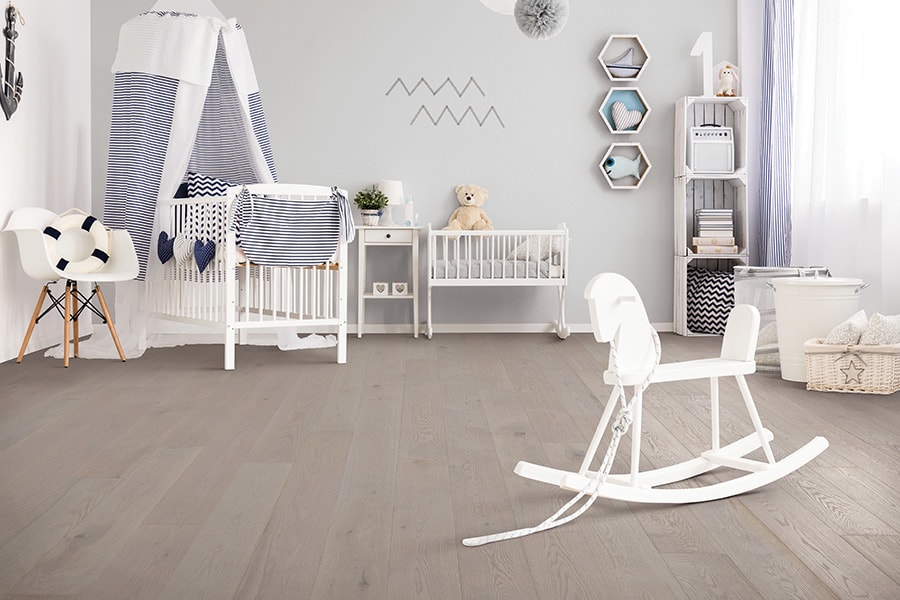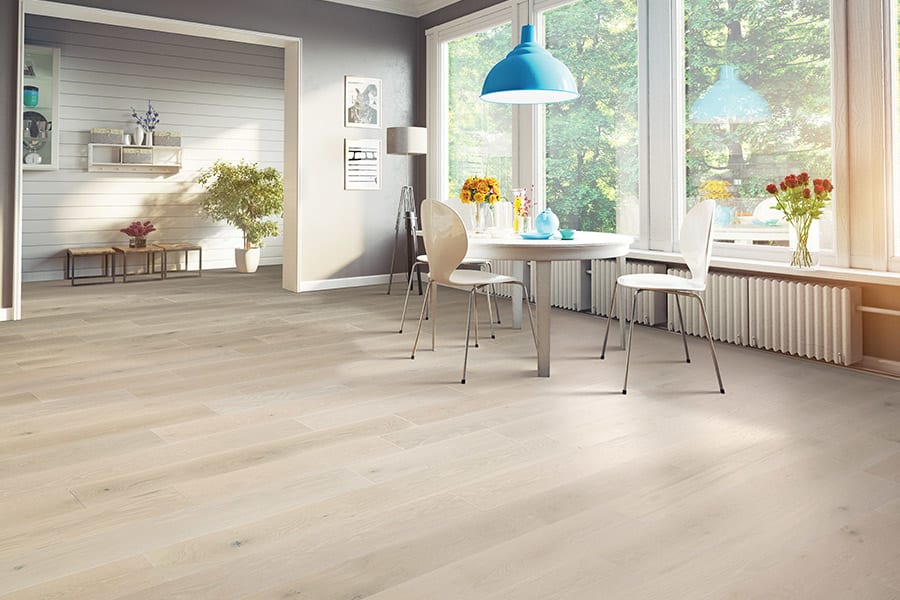Decisions to make when selecting hardwood flooring
Like any home improvement project, you will have a lot of key decisions to make. Floors For You Kitchen & Bath is a hardwood flooring retailer and our in-house design experts will be happy to address any of your concerns. They will walk you through the entire process, from the design point of view to the technical.
Matching hardwood to your home décor
Wood floors make your home look sensational!
They are rich, warm, and classic with beautiful undertones. When coordinated with your other room colors, artwork, window views, they will add a breathtaking, glamorous component.
Decide on species and stain color right away. What is the overall style of your home? What is the room in which it's to be installed? Is it sunny, large, or small?
There are many domestic and exotic species from which to choose, and the most popular ones right now are oak, cherry, walnut, hickory, and maple. Ask yourself questions about any extra durability needs; while all hardwood is hard, some are tougher than others. Also decide whether or not you want knots and swirls, as some species have more than others.
As for stains, there are three general hardwood tones. Light shades tend to be contemporary and airy and will make a room look larger. Dark tones are more traditional and formal. If you want a lot of knots, swirls, and raised grains, consider a medium tone where they'll show up the most.
Thickness affects both appearance, performance, and the number of times it can be sanded and refinished. For solid, the ideal is ¾-inch. It can be refinished five or six times.
They are rich, warm, and classic with beautiful undertones. When coordinated with your other room colors, artwork, window views, they will add a breathtaking, glamorous component.
Decide on species and stain color right away. What is the overall style of your home? What is the room in which it's to be installed? Is it sunny, large, or small?
There are many domestic and exotic species from which to choose, and the most popular ones right now are oak, cherry, walnut, hickory, and maple. Ask yourself questions about any extra durability needs; while all hardwood is hard, some are tougher than others. Also decide whether or not you want knots and swirls, as some species have more than others.
As for stains, there are three general hardwood tones. Light shades tend to be contemporary and airy and will make a room look larger. Dark tones are more traditional and formal. If you want a lot of knots, swirls, and raised grains, consider a medium tone where they'll show up the most.
Thickness affects both appearance, performance, and the number of times it can be sanded and refinished. For solid, the ideal is ¾-inch. It can be refinished five or six times.
Request an estimate
Solid vs engineered hardwood flooring
The only difference between the two is the construction. While solid is one slab, engineered is layered. At the top is a slice of genuine wood with all the undertones, raised grains, knots, etc. that we've come to expect.
Underneath are three or more layers of authentic wood combined with a little resin and then placed in crosswise positions. This gives it more stability and an increased ability to handle water, so it can be installed in some higher-than-normal moisture places where solid isn't recommended. While most Floridians don't have basements, they do sometimes have concrete slabs, and that affects installation. Know that the thickness of engineered wood, like solid, affects the number of times it can be sanded and refinished. This has a range of ⅝ to ½-inch. Thicker is better, and it can be refinished up to five times.
For more information about hardwood flooring visit the Floors For You Kitchen & Bath showroom in Jupiter, Fl. We service Jupiter, FL, Palm Beach Gardens, FL, West Palm Beach, FL, Juno Beach, FL, Hobe Sound, FL, && Boca Raton, FL. Ask about our estimates.
Underneath are three or more layers of authentic wood combined with a little resin and then placed in crosswise positions. This gives it more stability and an increased ability to handle water, so it can be installed in some higher-than-normal moisture places where solid isn't recommended. While most Floridians don't have basements, they do sometimes have concrete slabs, and that affects installation. Know that the thickness of engineered wood, like solid, affects the number of times it can be sanded and refinished. This has a range of ⅝ to ½-inch. Thicker is better, and it can be refinished up to five times.
For more information about hardwood flooring visit the Floors For You Kitchen & Bath showroom in Jupiter, Fl. We service Jupiter, FL, Palm Beach Gardens, FL, West Palm Beach, FL, Juno Beach, FL, Hobe Sound, FL, && Boca Raton, FL. Ask about our estimates.













